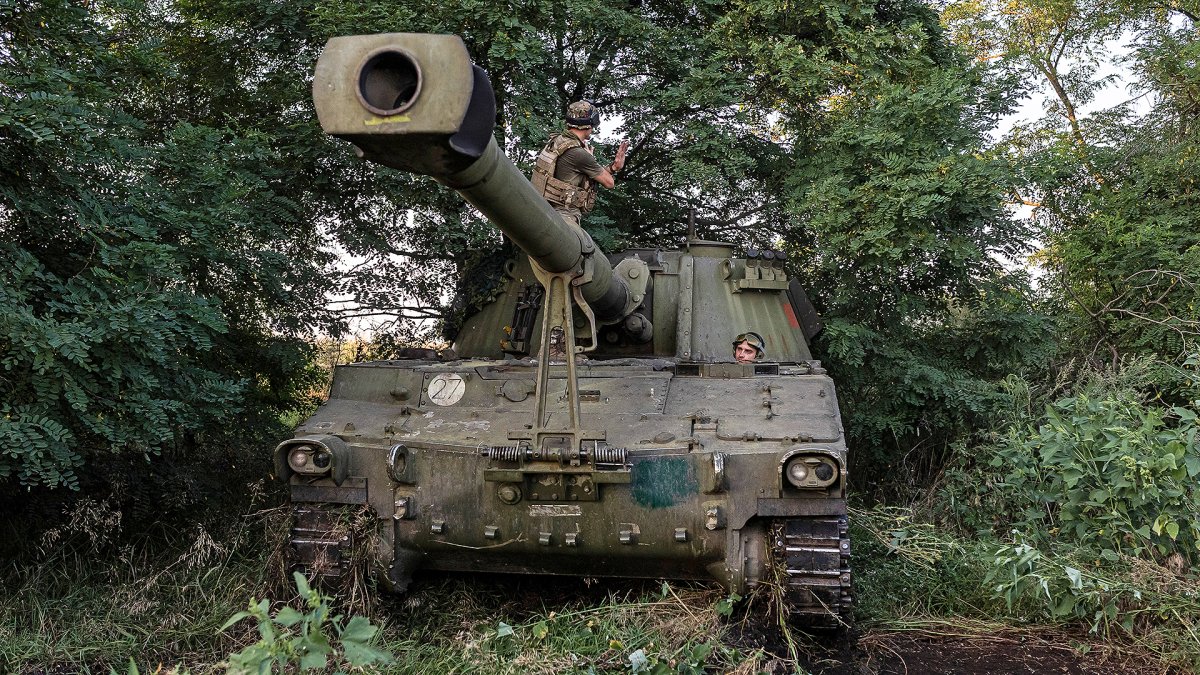Unless you have a Bde Group, you really don’t have Bde Arty. You have an Arty Bde (or two) at Div.
You really need to stop offering Mortars to Arty units. Mortars should be an Inf Bn integral asset (and a Cav Bn).
LRPF are Corps Assets - the Long Range fight doesn’t below to the Bde or Div, as they are maneuver units.
ADA, belongs to the ADA Bde in Div.
Certain Manpads and small C-UAS can exist outside of that - but they don’t belong to the Field Arty regardless
You’re trying to jam way too much stuff into one unit that cannot fit it, nor can it sustain or coordinate it.
Your responses, as is often the case, required some thought before countering.

It got me to thinking about the entire Bde Gp concept and how it fits into National Defence. And I think it ties in with the trouble the Army has in defining its role to itself and others. It turns out, in my opinion, this is not a uniquely Canadian problem. It seems to be shared by the whole of the ABCA/ABCANZUS/AUKUS/2-5 Eyes group. The Thalassians? The people of the World Island seem to have a very clear understanding of what their armies are for and when they are to be used. Their security, their survival, depends on matching the force (in physics terms) at their borders. Their internal pressure has to equal the external pressure in order to maintain the bubble in which they live and which their preferred rules rule.
For us mob, who have always sought the security of the seas and islands an army has never been more than a raiding force. Thalassians, Vikings, Brits or Yanks, our armies are never expected to be permanent features. We don't need them on our islands, and the Americas can be seen as the world's second island, after Mackinder's World Island, and there is no popular call for a permanent presence on the World Island.
The one thing that us Thalassians have, generally, agreed on is the need to keep the Mainlanders at bay. And the means to that was the wooden walls of our navies, our bows and arrows, our guns and rockets and our aircraft. In short technology. Or Ordnance.
The other characteristic of us lot is that our enemies have variously described us as nations of pirates, freebooters and shopkeepers. The corollary to raiding is trading. Living on islands gives us one major advantage the Mainlanders don't have. In order to maintain the equilibrium in their bubbles they have to make deals so that neither side of the bubble walls is at an advantage. If you are living on an island you can walk away from many deals. Or, to be fair, you can just go a-viking and take what you want and not worry about making friends.
Thanks to the US and its Monroe Doctrine Navy, and the UK, Canada is on an island and has been isolated from the world at large by the seas and only has one reasonably friendly neighbour with whom we must maintain equilibrium. With whom we must trade and where we must not raid.
Anything that we do must reasonably conform to the limits our neighbour can tolerate. Beyond that we are a lot freer than, for example, the Poles, Swedes and Ukrainians, who must always be prepared to defend their corner. Given the tight confines in which their small countries are working, the large populations they are supporting and the multiple land borders they are defending then armies and surface launched ordnance dominates. For them the army is a necessity and its purpose is clear. Whether the border is shield wall, a fence, a Maginot line or a line of tanks and howitzers there is always a hard line that has to be defended.
That line doesn't exist in Canada.
Or it hasn't.
Our line was a permeable barrier that allowed the free flow of goods and services that resulted in a self-sustaining equilibrium with our neighbour. The border was not under pressure. By and large those things which our neighbours could tolerate we could tolerate. That which we found intolerable they found intolerable. Broadly speaking.
But our island is changing on both sides of the border. More World Island Mainlanders want the peace and quiet they perceive we enjoy over here. They want to get away from the pressure of crowded bubbles maintained by active defence and constant negotiation. They envy the ability to head to the cottage for a month listening to loons and drinking beer. Why them and not us?
Add in the cyclical drying of the south and water shortages of the Napa and the Ogalalla Aquifer basin and our bubble is experiencing more pressure. And people are threatening to pierce that bubble.
Some of the threat comes from trade, some from people, some from ordnance. We manage the trade. We manage the people fairly well so far by filtering the incoming supply and monitoring the outfall. The ordnance threat we manage by means of the National Defence.
We retreat behind our own defensive ordnance - the technologies of the navy and the air forces. And with ordnances improving - with surveillance moving towards God's Eye views, with multi-nodal, multi-modal communications, with precision moving to the point where it is possible to hit a bullet in flight with a bullet, with missiles with inter-continental reach having been a reality for decades and intelligent chunks of cardboard loaded with high explosives loitering overhead - those ordnances are making the home space more secure. We can trade dollars for soldiers on the borders and retire to the cottage. If we choose.
We don't need an army. We don't need a Brigade or a Division. But we do need ordnance.
And, if we want friends on the Mainland then we can earn that friendship by helping them maintain their own bubbles.
We can do that through trade. We do.
We can do that through the free movement of people - and here things get sticky for me - I like a filter on that pipe. Free is too absolute for me.
Finally, we can help them hold their borders. Relieve the pressure on their bubbles and reduce the imperative for them to move.
And how best to do that.
Is our best solution to supply 5000 soldiers with rifles and tanks to a nation that fields an army of millions and tanks by the hundred? Or are we better friends if we spend the same amount of money and effort in supplying some of the same technology that is used on our island that allows us to ignore the world at our cottages?
My lean is towards the latter.
.....
Finally to your point
@KevinB
A brigade does not need corps elements. But those corps elements represent the technologies that keep our island secure. Because we don't need an army, we are a wealthy nation. We can afford to buy technology. We should be buying technology to support our neighbours in securing our island. We are not and we should be.
We can also afford to lend, or even donate, that technology, together with skilled operators, to other nations that wish to be friends.
In my mind that means providing things like EW and Cyber systems, comms, Long Range Precision Fires, and Air Defence, GBAD and C-UAS as well as operational Navy and Air Force elements..
You are right that a Brigade Group doesn't require any of the above and that those are Corps, Army and National capabilities. But those are things that we can afford and that many of our friends can't afford, or can't afford in numbers.
We can supply them and we should be supplying them.
We have few people - we can't afford a lot of blood. And we are disinclined to that in any event.
On the other hand we possess a massive treasure within or 10,000,000 km2 of land and 8,000,000 km2 of seas. We can afford to support a lot of friends with food, feed, fertilizers, fuels and farmaceuticals. We can sell to them at prices they can afford and still return a profit that will support our preferred lifestyle.
But the quid pro quo should be that some of those profits should go back into supporting our friends in the defence of their borders..
My preference, again, is to supply ordnance instead of soldiers. That ordnance needs to be operated and secured.
Perhaps a Brigade Group doesn't need Long Range Precision Fires. Perhaps it is a Corps element. Why aren't we aiming at supplying those Corps elements that our friends' Corps's are lacking?
If we send those technologies, that ordnance, we should probably send a suitable security force.
A Brigade Group doesn't need LRPFs? Perhaps you are right. But LRPF's probably require a Brigade Group.
....
In the early era of the Cold War Canada covered its friends with a nuclear equipped Air Division and a ground launched nuclear missile battery as well as an infantry brigade. It also provided an escort fleet to ensure the free flow of food, feed, fertilizers, fuels and farmaceuticals to its friends across the seas.
That commitment shrank over time until the Brigade Group was effectively holding an air terminus for a promised Air Division. The terminus was protected by the Brigade Group joining in the active defence of the area.
....
You and I agree that Canada doesn't do enough and that it should be doing a lot more. Where we disagree is how best Canada can conduct its own defence and contribute to mutual defence.
Cheers

No see above
No see above
Generally the Bde has 3 Maneuver units, the rest support those. You are severely overthinking this.
That isn’t new.



